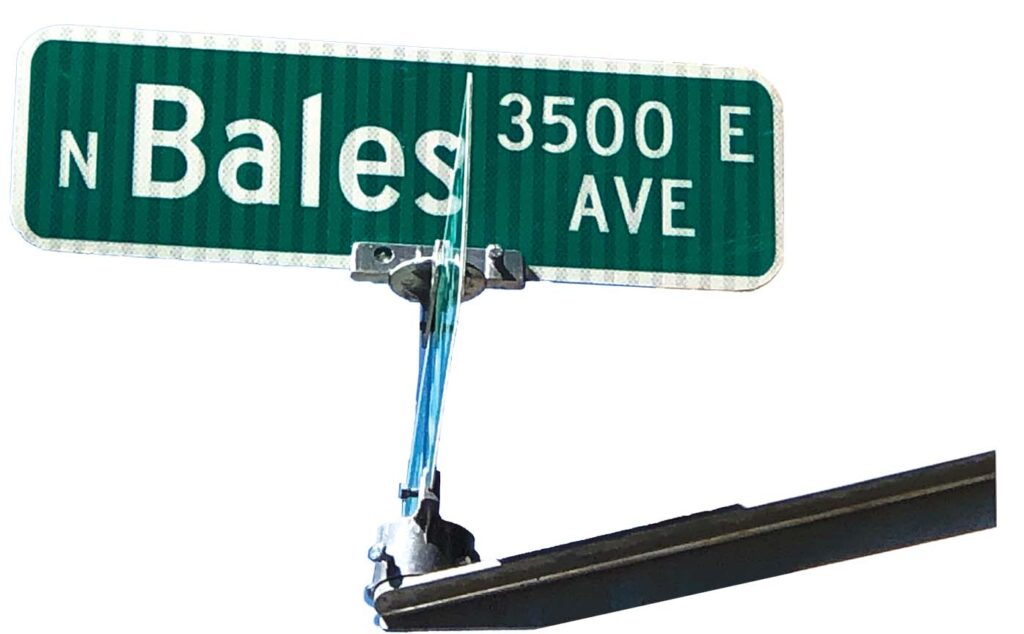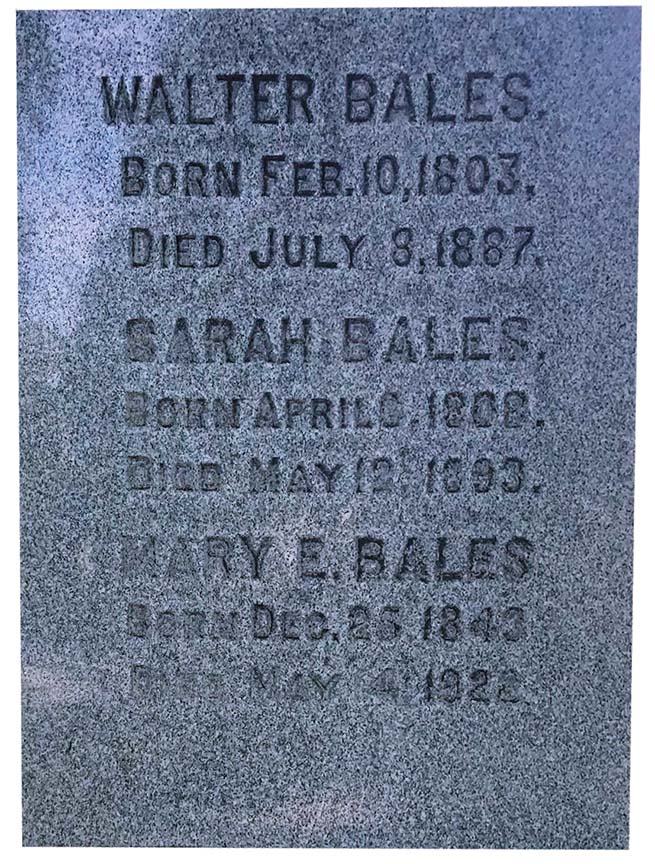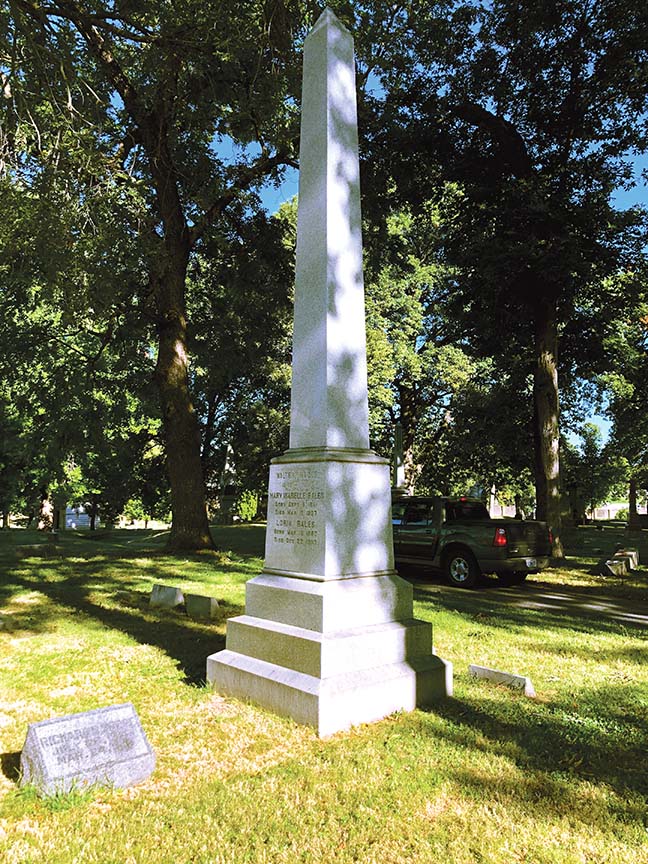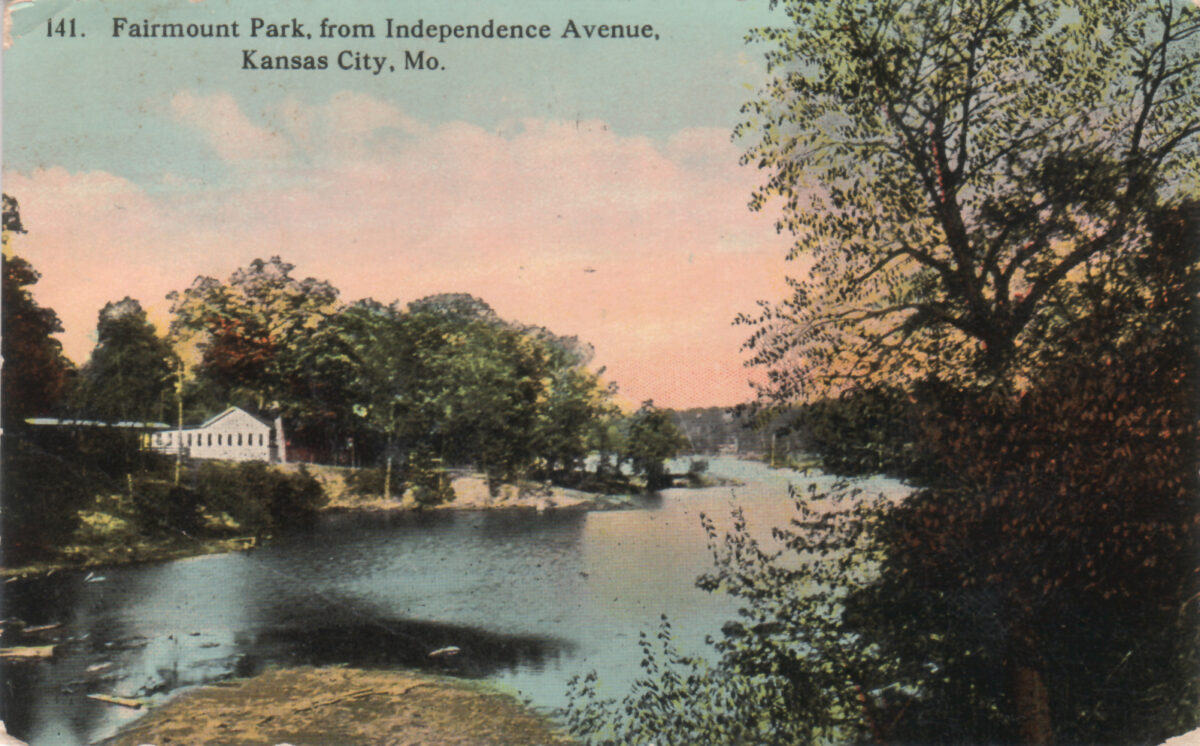
Dorri Partain
Contributor
Northeast neighbors during life may also end up being neighbors during their eternal rest. In the next plot north of the Burge family (from our Sept. 14 issue) lie 12 members of the Bales family, for which Bales Avenue is named.
Early settler Walter Bales (1808-1887) arrived from Tennessee in 1831 and a year later married Sarah, the daughter of John Johnson, who had arrived to what is now Kansas City in 1825. They homesteaded on land south of the Independence Road and built a log cabin that once stood where 14th St. intersects with Benton Boulevard.
In addition to farming, Walter served as Justice of the Peace and signed the documents for the town plats for the “City of Kansas” in 1846. At their log cabin home, several children were born: John (1833), William (1834), Samuel (1837), Walter (1842), Mary E. (1843), and James (1847). Of those, only John is not buried in the family plot.
Following his mother Sarah’s death in 1893, William became involved in real estate, subdividing the family farm for residential development as well as purchasing other local plots north of Independence Avenue. A 1888 map of Jackson County shows plots west of the Burge acreage that were owned by William and another Bales relative, Mary C. (1851-1939), who is also buried in the family plot.

Son Samuel is noted as being one of the founding members of the “Early Settlers of Kansas City and Vicinity” in 1896, which would be renamed the Kansas City Historical Society in 1906.
Son Walter is noted for his donation of land at 8th and Oak streets to build the first public library in Kansas City.
Daughter Mary E. never married and continued to live on the remainder of the family farm at 1107 Monroe until her death in 1922. After being widowed, brother William lived with Mary until his death in 1924. He is buried in Elmwood, but not in this plot.
Walter’s wife Mary I. (1851-1937) and son Lorin (1880-1938) are also buried in the Bales family plot. The family’s first burials were children; Johnny at age 1 in 1873, Sammy at age 2 in 1876, and Patsy Ann at age 11. The children’s markers are no longer visible.


















